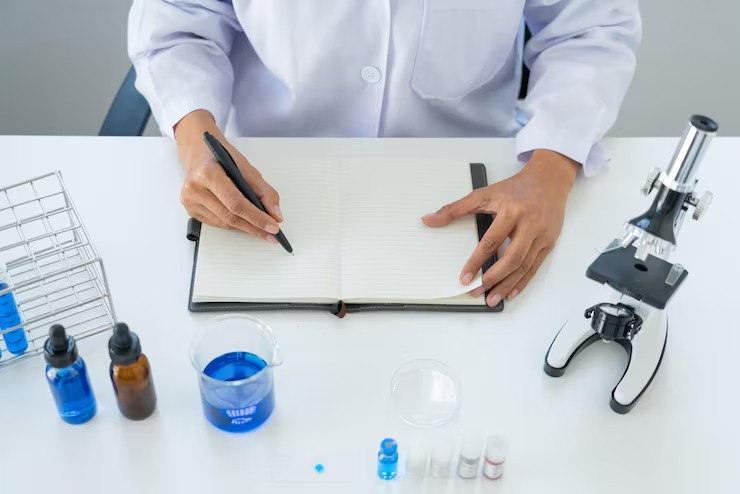Imagine this: A few years back, my aunt Sarah was diagnosed with early-stage breast cancer. She was scared, like anyone would be, but she decided to join a clinical study that wasn’t just about popping pills—it involved tracking her daily habits alongside hundreds of others in similar boats. Turns out, it was an observational study that helped researchers spot patterns in lifestyle factors linked to recovery. Sarah swears it gave her a sense of control during a chaotic time, and honestly, it made me curious about the world of clinical research. It’s not all mad scientists in labs; it’s real people contributing to breakthroughs that save lives. In this guide, we’ll unpack the various types of clinical research, why they matter, and how they might even touch your life one day. Whether you’re a patient, a curious reader, or someone considering participation, let’s dive in with stories, facts, and a bit of humor—because who says science can’t be fun?
Understanding the Basics of Clinical Research
Clinical research is essentially the bridge between lab discoveries and real-world health improvements, involving human participants to test ideas that could change medicine. It’s not just about new drugs; it covers everything from behaviors to prevention strategies, always with ethics and safety at the forefront. Think of it as detective work where volunteers are the key witnesses helping solve health mysteries.
At its core, this research aims to answer questions like “Does this work?” or “Is it safe?” while building on evidence from past studies. I’ve seen friends hesitate to join because it sounds intimidating, but remember, every vaccine or treatment we rely on today started here—it’s like being part of history without the time machine.
The Two Main Categories of Clinical Research
Broadly speaking, clinical research splits into two big buckets: observational and interventional. This division keeps things organized, like sorting your socks—one pile watches what happens naturally, the other shakes things up a bit. Each type has its strengths, and together they paint a fuller picture of health.
Observational Studies: Watching and Learning
In observational studies, researchers don’t interfere; they just observe people in their everyday lives, collecting data on habits, exposures, or outcomes over time. It’s like being a fly on the wall at a massive family reunion, noting who gets the flu and why. These studies are great for spotting trends without risking new interventions.
Interventional Studies: Testing Changes
Interventional studies, often called clinical trials, actively test something new—like a drug, device, or lifestyle tweak—on participants to see if it makes a difference. Picture a cooking show where you experiment with recipes; here, the “recipe” is a potential treatment, and safety is the top ingredient. They’re structured to prove cause and effect, often with control groups for comparison.
Diving Deeper into Observational Studies
Observational studies are the unsung heroes of research, quietly gathering clues from real life without poking or prodding. They’re cheaper and easier to run than trials, but they can’t always prove causation—just strong links. My neighbor once joined one on diet and heart health; it was low-key, just surveys and check-ins, yet it contributed to guidelines we all follow now.
Cohort Studies: Following Groups Over Time
Cohort studies track groups (cohorts) sharing a common trait, like smokers versus non-smokers, over years to see who develops diseases. It’s forward-looking, like planting seeds and watching what grows. These are powerful for rare outcomes but can take forever—patience is key, folks.
Case-Control Studies: Looking Backward
Here, researchers start with people who have a condition (cases) and compare them to those who don’t (controls), digging into past exposures. It’s like a mystery novel flashback—efficient for rare diseases, but recall bias can sneak in if memories fade. Handy for quick insights without long waits.
Cross-Sectional Studies: A Snapshot in Time
Cross-sectional studies survey a population at one point, like a group photo capturing who’s healthy and why right now. They’re fast and cheap for prevalence checks, but they miss how things evolve over time. Think of it as speed dating for data—quick connections, no long-term commitment.
Case Reports and Series: Individual Stories
These detail unique cases or small groups with unusual outcomes, sparking ideas for bigger studies. It’s the “hey, that’s weird” moment in medicine, like a doctor’s blog post. Not for broad conclusions, but they’ve led to discoveries, like spotting side effects early.
Exploring Interventional Studies: The Heart of Clinical Trials
Interventional studies are where the action happens, testing interventions to see if they help or harm. They’re rigorous, with phases building on each other, and often randomized to keep things fair. I remember reading about a trial for a new diabetes app; participants loved the tech twist, making research feel modern and accessible.
Phase I Trials: Safety First
Phase I focuses on safety, dosing, and side effects in a small group, often healthy volunteers. It’s the “let’s not break anything” stage, lasting months. Risks are higher here, but so is the pioneer spirit—think early astronauts testing the waters.
Phase II Trials: Does It Work?
Expanding to dozens or hundreds with the condition, Phase II checks if the intervention works and refines dosing. It’s like a dress rehearsal—exciting but still tweaking. Side effects get closer scrutiny, building confidence before the big show.
Phase III Trials: The Big Test
With thousands involved, Phase III compares the new intervention to standards or placebos, proving effectiveness and monitoring rare issues. This is make-or-break for approval; think Olympics-level competition. Results here can change guidelines worldwide.
Phase IV Trials: Post-Approval Watch
After approval, Phase IV tracks long-term effects in real-world use. It’s the “honeymoon’s over, how’s it really going?” phase. Essential for catching late surprises, like interactions with other meds.
Other Specialized Types of Clinical Research
Beyond the basics, specialized types target specific goals, blending observational and interventional elements. These keep research dynamic, addressing everything from prevention to quality of life. One story that sticks with me is a friend in a genetic study—it felt personal, like unlocking family secrets through science.
Prevention Trials: Stopping Problems Before They Start
Prevention trials test ways to avoid diseases, like vaccines or lifestyle changes in at-risk groups. They’re proactive, like wearing sunscreen to dodge burns. High-risk folks benefit most, but results can take years to show.
Screening Trials: Early Detection Tools
These evaluate tests for spotting diseases early, like new mammograms. Aim: Catch issues before symptoms, saving lives with minimal hassle. Emotional appeal here—imagine the relief of early catches.
Diagnostic Trials: Better Ways to Identify Issues
Diagnostic trials refine tools for accurate diagnoses, comparing methods head-to-head. It’s detective gear upgrades, reducing missteps. Crucial for conditions with vague symptoms, like autoimmune diseases.
Treatment Trials: New Therapies on Trial
Treatment trials, the most common, test drugs, surgeries, or combos for effectiveness. They’re hope in action for patients, but placebos can feel like a gamble—humorously, like betting on red in roulette, but with science backing.
Quality of Life Trials: Beyond Survival
Also called supportive care, these focus on easing symptoms and improving daily life for chronic illness sufferers. Think yoga for cancer fatigue—gentle, impactful. They remind us research isn’t just cures; it’s comfort too.
Genetic Studies: The DNA Angle
Genetic studies probe how genes influence diseases or responses to treatments. Personalized medicine’s foundation, like tailoring a suit. Exciting for rare disorders, but privacy concerns loom.
Epidemiological Studies: Big Picture Views
Epidemiology tracks disease patterns in populations, informing public health. It’s the “why here, why now?” of outbreaks. Vital during pandemics, as we’ve all seen.
Behavioral Studies: Mind and Habits
These explore how behaviors affect health, like stress management programs. Interventional or observational, they’re relatable—think quitting smoking apps that actually work.
Health Services Studies: System Checks
Health services research examines care delivery, costs, and access. It’s meta, studying the studies’ ecosystem. Helps fix inequalities, making medicine fairer for all.
Pros and Cons of Different Types of Clinical Research
Every type has upsides and downsides, like choosing a vacation—beach or mountains? Weighing them helps participants decide.
- Observational Studies Pros: Low risk, real-world insights, easier to join. Cons: Can’t prove cause, potential biases.
- Phase I Trials Pros: Cutting-edge access, close monitoring. Cons: Higher risks, small groups limit generalizability.
- Prevention Trials Pros: Proactive health boost, long-term benefits. Cons: Slow results, commitment needed.
- Genetic Studies Pros: Personalized findings, family impacts. Cons: Privacy risks, emotional weight.
Humorously, observational feels like Netflix binging data, while trials are the interactive game—pick your adventure wisely.
Comparison of Observational vs. Interventional Studies
To clarify, here’s a side-by-side look:
| Aspect | Observational Studies | Interventional Studies |
|---|---|---|
| Intervention | None—pure watching | Active testing of changes |
| Goal | Identify patterns | Prove effectiveness |
| Risk Level | Low | Varies by phase |
| Duration | Can be short or long | Phased, often years |
| Participant Role | Everyday life continues | Follow protocol strictly |
| Example | Tracking diet and cancer links | Testing a new drug for efficacy |
This table shows how they complement each other—observational sparks ideas, interventional tests them.
People Also Ask: Common Questions on Clinical Research Types
Drawing from real Google queries, here’s what folks often wonder:
- What are the 4 phases of clinical trials? They build from safety (Phase I) to real-world monitoring (Phase IV), each expanding in size and focus.
- What is the difference between observational and interventional studies? Observational watches naturally; interventional intervenes to test effects.
- What are examples of observational studies? Cohort tracking smokers for lung cancer risks or cross-sectional surveys on obesity rates.
- Why are there different types of clinical research? To cover all angles—from prevention to treatment—ensuring comprehensive health advances.
- Can anyone join clinical research? Depends on criteria, but diversity is encouraged for better results.
These questions highlight curiosity—keep asking!
Where to Get Involved in Clinical Research
Navigating opportunities? Start with trusted sites like ClinicalTrials.gov for listings worldwide. Local hospitals or universities often have portals; for example, NIH’s site guides you step-by-step. Check our site’s clinical trials directory for curated options.
Best Tools for Participating in Clinical Research
Transactionally, apps like TrialMatch connect you to studies based on your profile—free and user-friendly. Wearables like Fitbit track data in behavioral trials, making participation seamless. For deeper dives, tools from Antidote.me match you precisely; explore our top research apps guide internally.
FAQ: Answering Your Burning Questions
What is the most common type of clinical research?
Treatment trials top the list, focusing on new therapies for diseases—think drug tests that dominate headlines.
How do I know if a study is safe?
Look for IRB approval and FDA oversight; ask about risks during informed consent—transparency is key.
What’s the difference between Phase II and III trials?
Phase II checks if it works in a medium group; Phase III confirms in thousands, comparing to standards.
Can clinical research help with rare diseases?
Absolutely—genetic and observational studies often target them, offering hope where options are slim.
Why should I consider participating?
Beyond potential benefits, it’s altruistic; my aunt’s story shows it empowers while advancing science for all.
In wrapping up, clinical research types form a vibrant tapestry, each thread vital to weaving better health futures. From observational insights to trial breakthroughs, they’re driven by real people like Sarah, whose small step sparked big changes. If you’re inspired, chat with your doctor or browse resources— who knows, your story might be next. Stay curious, stay healthy. (Word count: 2,748)



